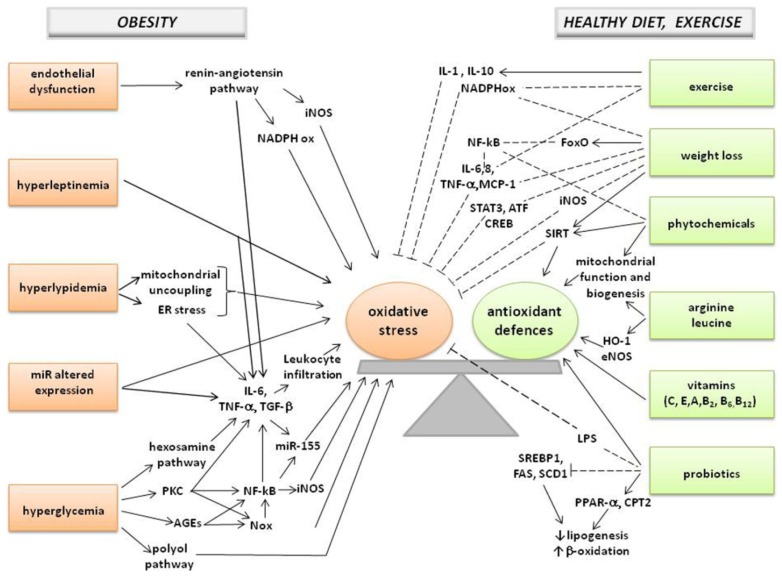Figure 1.
Mechanisms modulating oxidant/antioxidant balance in obesity. On the left-hand side are shown mechanisms underlying oxidative stress in obesity and obesity-associated complications, while on the right-hand side are shown strategies improving body antioxidant machinery (see text for details). Dotted lines: inhibitory effect. Solid lines: stimulatory effect.
AGEs: advanced glycation end products; ATF: NF-κB, activating transcription factor; CPT2: carnitine palmitoyltransferase 2; CREB: cyclic AMP response element binding; ER: endoplasmic reticulum; FAS: fatty acid synthase; FoxO: forkhead box, sub-group O; HO-1: heme oxygenase-1; iNOS: inducible nitric oxide synthase; LPS: lipopolysaccharide MCP-1: monocyte chemotactic protein-1; miR: microRNA; NF-κB: nuclear factor-κB; Nox: NADPH oxidase; PKC: protein kinase C; PPAR-α: peroxisome proliferator-activated receptor-α; SCD1: stearoyl-CoA desaturase-1; SIRT: sirtuin; SREBP1: sucrose responsive element binding protein1; STAT3: signal transducer and activator of transcription 3; TGF-β: transforming growth factor-β; TNF-α: tumor necrosis factor-α.

